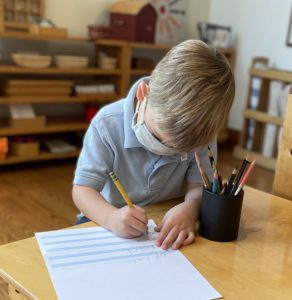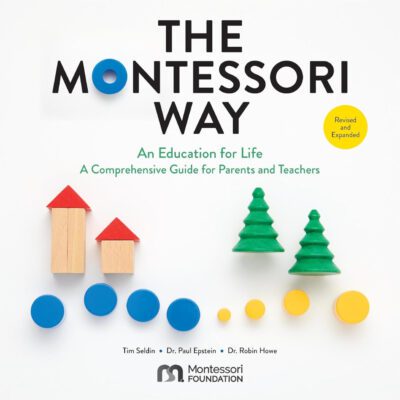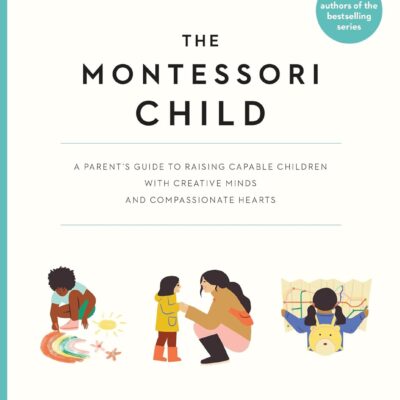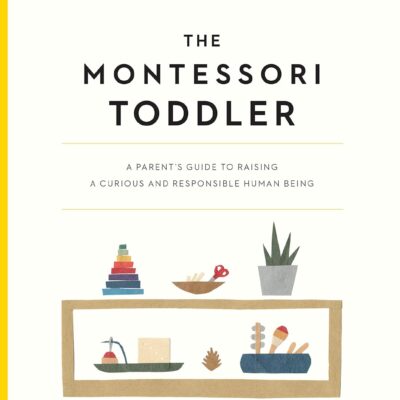The Montessori Approach to Living Well in Anxious Times
The Covid 19 pandemic has brought about so many feelings in all of us: fear, uncertainty, sadness, loneliness, isolation, confusion, a sense of accomplishment, a sense of failure, a lack of connection, a loss of normalcy. I have seen a wide variety of reactions. Some have lived in constant fear, while others have gone about their lives, trying to maintain some sense of the ordinary. There are also people like me, who, as an extremely careful (some might say ‘germaphobe’) pre-Covid, already washed their hands multiple times a day, avoided people with colds, and pushed doors open with a foot. We felt comfortable and less anxious than in non-Covid times, because all of a sudden, others were finally doing what we had wanted them to do all along. We were fortunate to have in-person learning last school year with no Covid cases in our student body—quite a feat! The reason it is vital for students to be in school is not only because children need routine and structure, but because children crave and thrive in an environment that is prepared just for them— materials that appeal to their developmental needs; furniture that fits their bodies; teachers who are fully present and watching for every detail that tells them what your child needs to work on or if they’re ready to move on. This year, despite our hopes at the start of summer, we are in masks again. But we are still in person, taking the necessary precautions to keep our children, teachers, and staff safe.
Fortunately, the Montessori Method deliberately prepares children to experience and move beyond uncertainty and failure.
Montessori materials provide a built-in control of error. That means that if a cylinder doesn’t fit in a particular hole, there is another one that will. So, children encounter small ‘failures’ or ‘mistakes’ throughout their day at school. If they don’t exchange the golden beads correctly (10 units = 1 ten), the answer won’t be correct.
In facing these constant challenges, children come to view them not as obstacles, but as part of learning. Mistakes are a natural part of the learning process.
Our Secondary level students learn that each time they take a trip together. During these week(s)-long trips with their teachers, young adolescents make all the decisions, such as the route they will take, the amount of food they will need, and the gear they pack. These are all decisions that they must make and live with during these intense and transformational trips. Teens come out of the Secondary level with a confidence unmatched by children at traditional schools, because they come to know that they are capable of managing a high level of responsibility, for themselves and each other.
One of the overwhelming fears in the pandemic is the feeling of uncertainty. Covid has taken away our ability to control and know the outcome of every situation.
This is a valuable life skill we need more than ever today: being comfortable with uncertainty. As much as we have learned about pandemics, no one is certain of the outcome. How are we helping to prepare our children to be okay not knowing?
Montessori students are very self-aware. They have experienced the independence to choose which shirt to wear to school; the ability to pack and make their lunch each day; and decide the work they will do each morning.
Montessori teachers encourage curiosity, wondering out loud to the elementary child, “I don’t know why black holes exist…hmmm…I bet you could find out.” bringing their own individual gifts to the community. This is one of the ways we show each child respect, by listening to, encouraging, and supporting their own questions, thoughts, and ideas.
If you are familiar with the Montessori Method, you have heard about the “Absorbent Mind” of each young child. Parents experience it firsthand when we hear our child repeat something we have said, sometimes even embarrassing us out in public.
Dr. Montessori’s observation of children convinced her that what exists in the environment of each child becomes part of them. In Education for a New World, Dr. Montessori wrote, “These impressions not only penetrate the mind of the child, they form it; they become incarnated, for the child makes his own ‘mental flesh’ in using the things that are in his environment. We have called this type of mind the “absorbent mind…”
In the first plane of development (birth — age six), this absorbent mind takes in the language, sounds, smells, sights, tastes, and feelings that surround children at home and everywhere they go. That’s why we prepare our classroom environments so precisely. Home is their primary environment, but once they begin school, their classroom is their next one: a microcosm of society. As students move to the Elementary and Secondary levels, their world expands. Our job is to prepare children for the time when they will enter society in all its fullness. Our goal is to help them become leaders of that society, to know their place in it, and how they can contribute to the good of all — caring for the world in which they live.
In the classroom, children are provided with predictable routines and environments, freedoms and responsibilities, respect for individuality, and the joy of being part of a community who works together, caring for each other.
Children who are born into a situation of neglect hold onto that for their entire lives; science shows that healthy development is disrupted. We know about the plasticity of the brain, so some progress can be made, but often, these children have difficulty with executive functioning, emotional regulation, indiscriminate friendliness, and high anxiety.
In contrast, the warmth and affection provided to your children positively alters neural circuitry in the brain, which influences their health throughout their lives. This can protect them against the harmful effects of childhood stress.
One clear way for our children to feel our affection is by reading to them each night before bed. The nurturing that comes from the physical warmth and closeness of cuddling in bed, along with the sharing of a favorite book, will provide such strong memories for them later in life, so much so that a feeling of security will be part of their inner being.
One of our school’s founders, Paula Polk Lillard, writes in her article, Through Darkness to the Light, that, “It is the intangibles of life— love, courage, optimism, a sense of freedom— that sees us through life’s challenges and gives us a glimpse of a deeper level of reality than we can ever fully comprehend or articulate … The result was that we were not afraid to grow up. The world to us appeared as an exciting place, full of possibilities.” That’s what we want for our children.
Dan Baker, a psychologist and author, says, “We don’t describe the world we see. We see the world we describe.” We need to be careful how we describe the world to our children; rather than developing a sense of doom and helplessness, provide them with optimism about the future in which they will take part.
Focus on the positive things in our lives. Any stress that we are experiencing in our daily lives will be observed, absorbed, and acted out by our children. In our Montessori training, there is an entire lecture on preparing ourselves as teachers of these children. In The Discovery of the Child, Dr. Montessori writes, “[the teacher] must acquire a moral alertness… that is revealed in her tranquility, patience, charity, and humility. Not words, but virtues, are her main qualifications.” So we are always working on both personal and professional goals at our school (Forest Bluff School) so that we can be our very best for our children. The pandemic has brought out emotions that we may not have felt before. One obvious one is, of course, anxiety—a cognitive state in which we have feelings of tension, nervousness, restlessness, having a sense of impending danger, panic, or doom. Children will see this manifested on our faces, in our tone of voice, and in our reactions to other’s comments or thoughts.
We need to keep ourselves in check. As our children become older, we can talk to them a little more about our worries and our concerns. In the second plane of development (6—12), they have a reasoning mind and are more able to understand the issues facing society.
For their drama performance last year, the children in our 9-12 class actually wrote three vignettes on different pandemics: the Black Death, Yellow Fever; and the flu of 1918. They did this to help process their feelings about the Covid pandemic. But even our Elementary children, who understand the need to wear masks and socially distance, we’re still anxious about the measures we needed to take in the classrooms. And our oldest
The pandemic has brought out emotions that we may not have felt before. One obvious one is, of course, anxiety…
students in the Secondary level discussed and debated the merits of quarantining before their trips (dogsledding in Minnesota and canoeing in northern Wisconsin). Children in early adolescence can understand and handle more complex and divisive issues, such as mandating vaccination, but they are not yet fully their own person.
So, children of all ages are affected by how we, the adults in their lives, act and react to the stressors in our own lives. That’s why it is critical that we focus on good things, rather than on things that worry and concern us.
One of the most effective ways of doing this is to practice gratitude. When we are thinking about what we are grateful for in our lives, it makes it harder to be sucked into the anxiety vortex. We know from a study of mental health that one of the things that people suffering from depression and anxiety do is to ruminate on the same worry over and over. Depression and anxiety most often operate in tandem, and once a developing child starts to go down that path, it’s a long and difficult journey back to good mental health.
It is important that we do everything we can to stay positive in our own mental attitude. Try to remind yourself of the beauty all around us—our children, most of all, but also the simplicity and peace that comes from being outside in nature. disorder, outlining the problems that come from us not spending enough time outdoors. He writes that direct exposure to nature is essential to healthy physical and emotional development, both for children and adults. We know the effects of ADHD, obesity, and depression stem partly from us sitting indoors, spending time on our screens, for example.
Nature is healing. Not only does it bring us a sense of peace and calm, but it reminds us of the great big world in which we live and our part in it. The beauty of nature reminds us that there is a spirituality that we and our children are longing for.
Take a positive approach to everything you do with your children. There are lots of good ideas in the book Let’s Go Outside! by Jennifer Ward, and here are some concrete ideas I’ve gathered for you to take home and try:
- Have a scavenger hunt in the woods behind your house.
- Find different types of leaves, then take them home and make a collage out of them, or for the older children, have them look them up, label them, and categorize them according to their shape.
- Get ideas from the British sculptor Andy Goldsworthy, who works with nature objects, creating incredibly beautiful and unique works of art outdoors. Then, make art with nature objects: mosaics, collages, paintings in the outdoors, find the letters of the alphabet from things in nature, do leaf rubbings, make sun prints.
- Find more ideas at montessori.org.
I spoke with a parent in the Secondary Level, who told me that her child, who is almost fourteen, asked for her to be around more. We are all motivated by relationships. I was listening to a Hidden Brain podcast the other day, and the topic was happiness. Those who engage in social interactions are the happiest. To be most fulfilled, we need to be engaged with each other. That’s why the pandemic has been so damaging, why therapists are booked for months in advance, why animal shelters are empty.
Gratitude is the antidote to taking things for granted. Oftentimes, we forget too easily the gifts that we have been given. We forget that life is impermanent. If it doesn’t come naturally to you, you must remind yourself how grateful you are for all you have. Once we received the stay-at-home order last year, we very swiftly went into our own lockdowns. It wasn’t until then that we realized how much we missed seeing others face-to-face, feeling their touch, giving hugs to our friends or our grandparents. It wasn’t until we lost those pleasures, that we realized what we had pre-pandemic.
We faced much of that again this summer, but let us not forget how meaningful and vital those small things are once we come out of this challenging time. Let’s share with our children the gifts of affection and love that they need and desire.
When we just focus on what we’re doing— the activities of our daily lives—we find more happiness. Don’t rush your children through their day, but give them time to get fully engaged in an activity. Once they are, step away and do your own thing. They will get used to this, and this ability of children to be comfortable with themselves helps foster intrinsic motivation.

We want the children to focus on the journey, not the arrival. That’s the reason we don’t send home every piece of work your child does at school. It’s about the process of working with the materials they have chosen: utilizing their pincer grip to develop fine-motor control, which leads to better handwriting; advancing their ability to concentrate, following the steps and progress from one inset to multiples, concentrating as they are developing while creating their metal inset.
Just because you are sad about wearing a mask again this year, guess what? Your children are very adaptable and don’t mind it as much as you think. I have observed in our classrooms daily since school began, and what I have seen is wondrous. They aren’t talking about or complaining about wearing a mask. We project our fears and anxieties onto our children without even realizing we’re doing it. When we live like that, we are simply trying to get to the next moment, the next day, the next week. Remind yourself that your children are at school to work with these beautiful materials and to soak up everything in their classrooms and outdoor environments.
In addition, try not to talk about your own worries in front of your children. “Listen more; talk less” is a good mantra. Only if they ask, explain to your 3-year-old why we wear a mask at school, calmly saying, “We’re helping others by wearing a mask, so that we all try to keep each other healthy.” With courage, you and your children feel empowered to take on each new day, each new challenge. They are not overwhelmed by the statistics and data, and we need not be either. Let them know that humans are amazingly adaptable, and that with their gifts of intellect and will, spirit and curiosity, we have (as a species) accomplished incredible things.
Reassure your older children that this is not the first time the world has experienced a pandemic. If we model courage and optimism ourselves, our children will pick that up and understand that they, too, have the abilities and gifts to overcome any challenge that comes their way. In doing this, not only will you aid in their healthy emotional development, but you will be happier yourself. Maria Montessori said, “Joy, feeling one’s own value, being appreciated and loved by others, feeling useful and capable of production, are all factors of enormous value for the human soul.”
Create and maintain a sense of order in your home. Dr. Montessori wrote, “Order is one of the needs of life which, when it is satisfied, produces a real happiness.” Stick to your routines, waking up at the same time each day, having them make their own lunch, reading before bedtime. The comfort they derive from the stability in their day will help them feel secure and safe. They will know what to expect, which is extremely beneficial for younger children, and they will know that you are there and that you love them. This will provide them with a sense of joy, as well.
At the dinner table, share stories of your family’s history. Bruce Feiler, author of The Secrets of Happy Families, recommends we write a family narrative—what values are important in your family? Have you talked about it? Do you have a family mission statement? Do your children know it? Feiler also cites Marshall Duke and Robyn Fivush’s research, which found that the more children know about their family’s history, the stronger their feelings of self-worth and their sense of control over their lives.
They created a “Do-You-Know?” scale: Do you know where your grandparents grew up? Do you know where your parents met? Do you know where your mom and dad went to high school? So, tell them your stories, so they come to understand their own place in your family!
Another way to provide peace in your homes is to do some form of mindfulness meditation, a practice of self-awareness in body and mind. We always recommend that you not over-schedule your children’s afternoons and weekends. We all need this time, and after a full day in a Montessori classroom, children have lots to process and work through—all the activities they did, all the social interactions they had. They need time every day to relax their bodies and minds.
Meditation can help with this. It can be as simple as deep breathing. Breathe in on a count of four (1-2-3-4), hold (for a couple of seconds), and breathe out on a count of six (1-2-3-4-5-6). Do that three times with your children throughout the day, or when you’re feeling stressed. They’ll think it’s fun because it’s a new and different way of breathing. This helps relax their bodies and settle their minds, providing emotional balance and resilience in dealing with difficult situations. Dianne Maroney, founder of the Imagine Project, writes that, “Mindfulness creates resilience because it promotes an understanding of one’s emotions, the ability to control emotions, and a deeper sense of knowing what we are fully capable of.”
There are many resources on meditating with children. Do a body scan with your child, having them focus on one part of their body at a time, considering how each part feels in that moment. Pause occasionally in their day and have them identify one thing they can see, one thing they can hear, one thing they can smell, and one thing they can feel. It brings them into the present moment and creates a sense of self-awareness.
When issues of political or social unrest come up in your family, listen, acknowledge their feelings, and then talk about those in history who have stood for leadership and courage. When you express gratitude for others’ accomplishments and kindness, your children are then better able to approach, with respect and understanding, the differences they encounter in others and in the world. Talk about ways to peacefully accept and respect those with different views and opinion. These interactions happen daily in the classroom and outside of it, and the children are shown ways and given language to express their feelings with kindness. These types of interactions help them to develop the necessary skills of listening, cooperation, compromise, and mutual respect.
Gratitude can also be fostered by serving others in need. This begins in the classroom, where each child cares for the environment: watering the plants; washing the dishes; dusting the shelves. They learn that their contribution to the class is important, as it also is at home. As children get older, this will translate to their realization that this care extends to those outside their own community. Here are a few ideas of ways your children can serve the larger society in which they live, while having to stay within the safety of their own homes during the pandemic:
As a family, packing “blessing bags,” with supplies those experiencing homelessness need when living on the streets, is a wonderful way to give to others who are less fortunate. Our family made some last year, filling a gallon-size bag with things like granola bars, hand warmers, bottles of water, needed hygiene items, and a list of shelters and local organizations that could help them. We kept the bags in our car, and when we traveled into the city and stopped at a traffic light, guess how thrilled the person was to get one of these? One man said, “Oh, I love these!”
Anytime we can get outside ourselves— our own concerns and agendas—we gain a different perspective. We forget about our problems and are able to see that often, they pale in comparison to others’. Children need to see these things as they get older, and at the Elementary and Secondary levels, they are well able to use their sense of compassion to help others outside their immediate environments. Often, non-profit organizations don’t accept volunteers under the age of sixteen, so be creative! Make bookmarks for the elderly and drop them off at a retirement community. Shop for your local food pantry with your children, dropping the needed items off at the store or church collection points. Make homemade valentines to share with elderly neighbors.
Finally, one of the virtues I dearly espouse is hope. Without it, we would be living in a place of darkness. When we have something to look forward to, things always seem rosier. Research shows that anticipation of something can be more enjoyable than the thing itself. During the pandemic, we have had to cancel plans and vacations and time with family and friends, so it’s been difficult to place our hope in anything specific. I think of hope as the belief that things will improve. This is not a superficial cheerfulness, but the faith I have that this pandemic will end. We can’t know when or how things may be different on the other side, but we have the strength to endure the losses and hardships until that time; and then when it comes, we can hold onto the gratitude long after our circumstances change. If we make that paradigm shift in our thinking, our children will sense it and come out of this time of darkness knowing there will always be light to see us through.
Bibliography:
Baker, D. What Happy People Know. USA: Rodale, 2003.
Feiler, B. The Secrets of Happy Families. New York: HarperCollins Publishers, 2013.
Lillard, P. “Through Darkness to the Light,” Forest Bluff School Blog Article Number 65 (April 12, 2020): 5.
Louv, R. Last Child in the Woods. New York: Workman Publishing, 2008.
Maroney, D. “Using Mindfulness during Stressful Times.” Accessed September 8, 2021. https://theimagineproject.org/ using-mindfulness-during-stressful-times/. Montessori, M. Education for a New World. Amsterdam: Montessori-Pierson Publishing Company, 2018.
Montessori, M. The Discovery of the Child. Translated by M. Joseph Costelloe. New York: Ballantine Books, 1967.
Montessori, M. The Absorbent Mind. Translated by M. Joseph Costelloe. New York: Bantam Doubleday Dell, 1984.
Montessori, M. The Secret of Childhood. Translated by M. Joseph Costelloe. New York: Ballantine Books, 1966.
Vadantam, S. Hidden Brain Podcast. “Where Happiness Hides.” September 6, 2021.
Ward, J. Let’s Go Outside! Boston: Trumpeter Books, 2009.
 Laura Earls began her Montessori career at Forest Bluff School nearly thirty years ago. She has recently returned to Lake Bluff, Illinois to take on the role of Head of School there, bringing with her a genuine love for the school and a deep understanding of its child-centered mission. Laura first came to Forest Bluff in 1994 as a Lower Elementary teacher, after earning her AMI Elementary Montessori Certification at the Montessori Institute of Milwaukee with Margaret Stephenson and Allyn Travis. During that first year, Paula Polk Lillard profiled Laura’s classroom in the book, Montessori Today, and in 1998, Laura was invited to speak at the AMI-USA National Conference on respect as the basis of grace and courtesy in the Elementary classroom.
Laura Earls began her Montessori career at Forest Bluff School nearly thirty years ago. She has recently returned to Lake Bluff, Illinois to take on the role of Head of School there, bringing with her a genuine love for the school and a deep understanding of its child-centered mission. Laura first came to Forest Bluff in 1994 as a Lower Elementary teacher, after earning her AMI Elementary Montessori Certification at the Montessori Institute of Milwaukee with Margaret Stephenson and Allyn Travis. During that first year, Paula Polk Lillard profiled Laura’s classroom in the book, Montessori Today, and in 1998, Laura was invited to speak at the AMI-USA National Conference on respect as the basis of grace and courtesy in the Elementary classroom.
After moving to Wisconsin to raise her three children, Laura received her AMI Primary Montessori Certification at the Midwest Montessori Institute with Hildegard Solzbacher. She then directed a Primary class at a Montessori school in Lake Country, Wisconsin, where she also served as Director of Admissions. Laura received her BA in art history from the University of Dallas and did graduate work in art history at the University of Notre Dame. She has lived and studied in both Paris and Rome and is an accomplished pianist.









